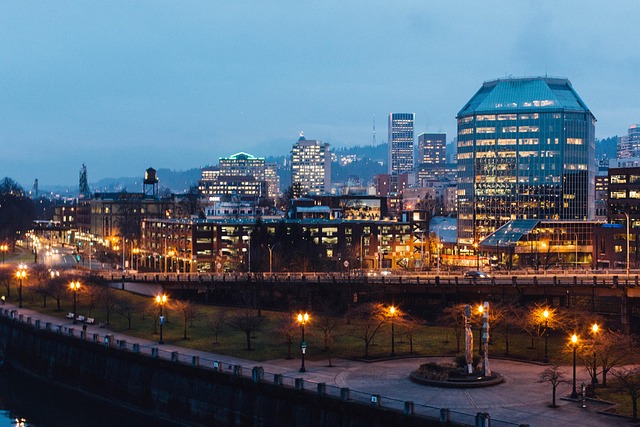From 1920-1933, Lane County, Oregon navigated the Prohibition era with a dual landscape. While legal alcohol sales plummeted, speakeasies thrived in cities like Eugene, offering clandestine drinking spots. Bootlegging became a lucrative but dangerous enterprise, fueled by the vibrant temperance movement. This complex web left an indelible mark on the county's social and economic history, reshaping its economy and culture.
“Lane County, Oregon, during the Prohibition era (1920-1933), experienced a complex interplay of economic transformation and societal upheaval. As the nation grappled with the temperance movement, Lane County became a microcosm of underground speakeasies thriving in hidden corners, challenging the strict dry law. This article delves into the historical context, exploring how Prohibition shaped local businesses, communities, and the long-term economic legacy of this controversial era in Lane County’s prohibition history.”
- Historical Context: Lane County During the Prohibition Era
- The Rise of Speakeasies in Oregon's Hidden Corners
- Enforcing the Dry Law: Challenges and Controversies in Lane County
- Economic Shifts: Impact on Local Businesses and Communities
- The Legacy of Prohibition: Long-Term Effects on Lane County's Economy
Historical Context: Lane County During the Prohibition Era

During the Prohibition era (1920-1933), Lane County, Oregon, like many other regions across the country, underwent significant economic transformations. The 18th Amendment to the U.S. Constitution banned the production, sale, and transportation of alcoholic beverages, sparking a unique period in local history. In response to the new prohibition laws, Lane County’s economy saw both subtle shifts and overt adaptations. While legal liquor sales decreased dramatically, underground speakeasies flourished across Eugene and other cities. This clandestine network of hidden bars and clubs, often disguised as regular businesses, became hotspots for those seeking a drink in violation of the law.
The temperance movement, which had been gaining momentum before Prohibition, found fertile ground in Lane County. Local organizations and church groups actively promoted abstinence from alcohol, influencing community dynamics and shaping public policy. Concurrently, bootlegging became a lucrative yet risky enterprise, with individuals daring to smuggle and sell illegal liquor, often paying high prices for the privilege. Law enforcement agencies in Oregon, including those in Lane County, intensified their efforts to combat this illicit trade, leading to increased patrols and surveillance. This dual nature of the Prohibition era—a clash between underground revelry and heightened legal scrutiny—left an indelible mark on Lane County’s economic and social landscape during these years.
The Rise of Speakeasies in Oregon's Hidden Corners

In the heart of Lane County during the prohibition era, a unique and clandestine economy flourished—one that became synonymous with the stealth and sophistication of speakeasies. As national prohibition laws took hold, businesses and residents found creative ways to circumvent the ban on alcohol sales. Hidden away in rural corners and bustling urban districts alike, Oregon’s speakeasies became hotspots for those seeking a sip of the forbidden fruit. Lane County, with its rich history of temperance movement activism, saw a rise in bootlegging operations and clandestine gathering places, where locals and visitors alike could enjoy illegally obtained spirits.
These speakeasies were more than just illegal bars; they were vibrant, often elaborate establishments that catered to a diverse clientele. From farmhouses transformed into hidden taverns to underground cellars accessible only by secret doors, Oregon’s prohibition history is woven into the very fabric of these clandestine venues. Law enforcement in Lane County faced an uphill battle against the thriving bootlegging industry, as speakeasy owners and operators employed clever tactics to stay one step ahead.
Enforcing the Dry Law: Challenges and Controversies in Lane County

Enforcing the Dry Law in Lane County during the Prohibition era presented unique challenges and controversies. With the goal of eliminating alcohol sales, the local and federal authorities faced a difficult task as residents found ways to circumvent the prohibition laws. Oregon’s speakeasies became hotspots for social gatherings and clandestine alcohol consumption, often disguised as legal enterprises. Lane County, in particular, experienced a boom in bootlegging activities, where illicit distilleries and clandestine dealers supplied the growing demand for prohibited beverages.
The temperance movement, which advocated for abstinence from alcohol, gained significant traction during this period. However, it sparked debates and tensions within the community. Law enforcement officials struggled to keep up with the evolving tactics of bootleggers, leading to concerns about corruption and the effectiveness of prohibition laws. The complex web of underground operations and vigilant communities created a tense atmosphere, shaping Lane County’s historical narrative during America’s dry years.
Economic Shifts: Impact on Local Businesses and Communities

The implementation of prohibition laws in Lane County, Oregon, during the 1920s brought about significant economic shifts that reshaped local businesses and communities. With the illegalization of alcohol, many traditional establishments like taverns and saloons had to adapt or close their doors, leading to a visible decline in the hospitality sector. However, this period also witnessed the rise of speakeasies—underground bars operating in secret—which became hotspots for social gatherings and economic activities, albeit illegally.
The temperance movement’s influence led to increased law enforcement efforts against bootlegging, causing a parallel surge in underground trade. This dynamic created a complex web of opportunities and risks for local entrepreneurs. While some found success in supplying contraband alcohol, others faced the consequences of strict prohibition laws. The era left a lasting impact on Lane County’s economic landscape, reshaping community dynamics and leaving traces that would influence future business ventures.
The Legacy of Prohibition: Long-Term Effects on Lane County's Economy

The legacy of Prohibition in Lane County stretches far beyond the mere absence of alcohol sales. This period left a lasting impact on the local economy, reshaping business landscapes and creating unique cultural remnants that still resonate today. The secrecy and subterfuge of speakeasies flourished, becoming integral parts of the social fabric, with hidden bars and clandestine gatherings becoming commonplace.
The Prohibition era also spurred economic diversification in Lane County. Bootlegging operations thrived, leading to a robust underground economy and the rise of cunning entrepreneurs who navigated the treacherous path of illegal trade. Simultaneously, law enforcement efforts intensified, creating opportunities for specialized roles and fostering a network of vigilant community members. The temperance movement’s influence left an indelible mark on the county’s moral fabric, shaping societal norms and values that extended beyond just alcohol consumption.
